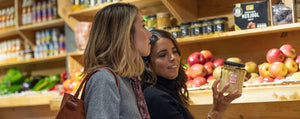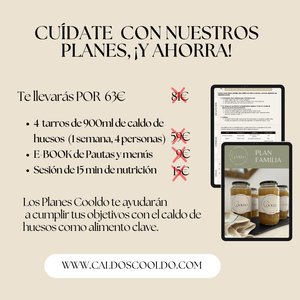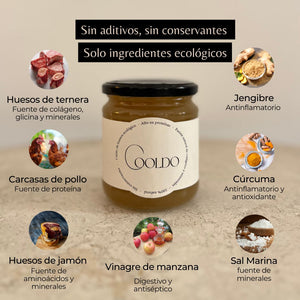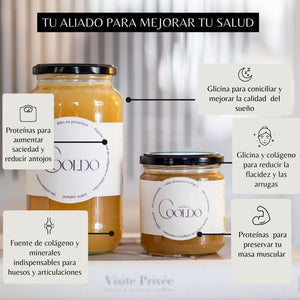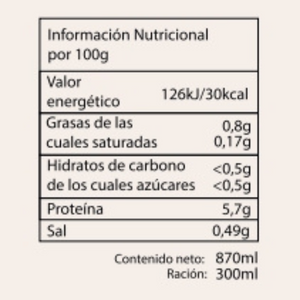As the basis of a healthy diet, rule #1 is to eat and buy real food , that is, foods that come directly from nature. Because your body is designed to “decode” foods and nutrients, not dyes, preservatives, additives and hydrogenated fats. But unfortunately the food industry offers what consumers demand and although it is "fashionable" to take care of themselves, the industry, which is governed by economic interests, sells us cheap, profitable and unhealthy products disguised as “functional or healthy food” by adding calcium, Vit D, Omega 3...
If you eat processed or ultra-processed foods, they must be carefully selected, that is, you must read their ingredients and learn to read nutritional labels to choose the healthiest options. Because between the marketing and the positioning of the foods on the supermarket shelves, which are strategically placed so that we snack on the offers, and seduce us with their healthy goodness, it is not an easy task!
So don't be fooled. Before buying a product, turn around that pretty packaging with certainly misleading advertising that endorses health "benefits."
Here we leave you the basic rules for learn to read nutritional labels and know what you buy.
1. If you can't understand what you read...
Your body won't understand what you eat. That's why this first rule is very easy, if there are ingredients you've never heard of, your body doesn't need it.
2. No more than 5 ingredients.
Manufacturers must list the ingredients from highest to lowest proportion. Normally, after the third, there are no longer any ingredients that provide great nutritional value. In addition, the vast majority of ultra-processed and refined foods contain sugar, salt and refined fats, since if they didn't, they would taste terrible. And if any of these are among the first three ingredients, it is not worth reading further.3. Look for the sugar...
It's everywhere! A widely used technique is to include different types of sugar, in such a way that they reduce the amount of each one, making these ingredients appear lower on the list. Obviously it is a commercial strategy, the amount of sugar you eat is the same.
The food industry hides these sugars from us on labels by giving them multiple names : fructose, dextrose, glucose, lactose, galactose (almost anything ending in -ose is sugar), maltodextrin, molasses, corn syrup, high fructose corn syrup, powdered sugar, sweet corn, invert sugar, maple syrup, syrup, cane juice ... any of these names are equivalent to sugar (or worse).
4. Beware of "sugar-free", "low sugar", "low carb".
Hidden sugar appears again in the form of artificial sweetener. Aspartame, sucralose, saccharin, maltilol, sorbitol ...
These sweeteners are artificial and confuse the body, causing them to increase appetite and alter your metabolism and microbiota.
5. Be careful with certain additives, preservatives and colorings.
There are techniques for preserving food without the need to add additives, such as pasteurization, sterilization, salting... There are also some natural additives such as curcumin (E100) but the vast majority are artificial and harmful.
The most common is monosodium glutamate (E-621), a flavor enhancer commonly used in pickles, and can cause migraines, headaches, allergies, nausea, epileptic seizures, and more symptoms...
Certain dyes such as E110, E122, E102, E124 and E211 cause hyperactivity in children and are often included in children's desserts.
The list is extensive, in short - avoid all E's... a natural food does not need E's.
6. Say NO to hydrogenated fats and refined fats (TRANS).
Hydrogenated fats give texture and flavor to foods and help increase the life of ultra-processed products, but they reduce ours. Avoid refined fats such as canola, sunflower, soy and palm . Use only virgin versions.
As a fundamental rule, say NO to : pre-cooked foods, margarines, cookies, biscuits, industrial pastries, bagged potatoes... because they all contain this type of fat.
7. Look at the portions.
One strategy for us to increase our consumption of processed foods is to increase portions. When faced with real food , hunger-satiety signals work correctly. On the other hand, when you consume processed products, your reward system is altered and you lose control.
To know the amount you are really consuming, for example, of sugar, you should multiply what the label indicates by the serving.
- The WHO recommends a maximum of 50g of sugar (12 teaspoons) per day and, to really improve your health, 25g (6 teaspoons).
8. Don't be fooled with "strengthened" products and "benefits."
Prioritize fresh and natural foods rich in nutrients. Don't be fooled by packaging that promises goodness in ultra-processed food: strengthens your immune system, high protein content, 0% added sugars...
In Spain we have gone from consuming a Mediterranean diet to an ultra-processed diet. Do what you can to consume more responsibly and take care of your health.

